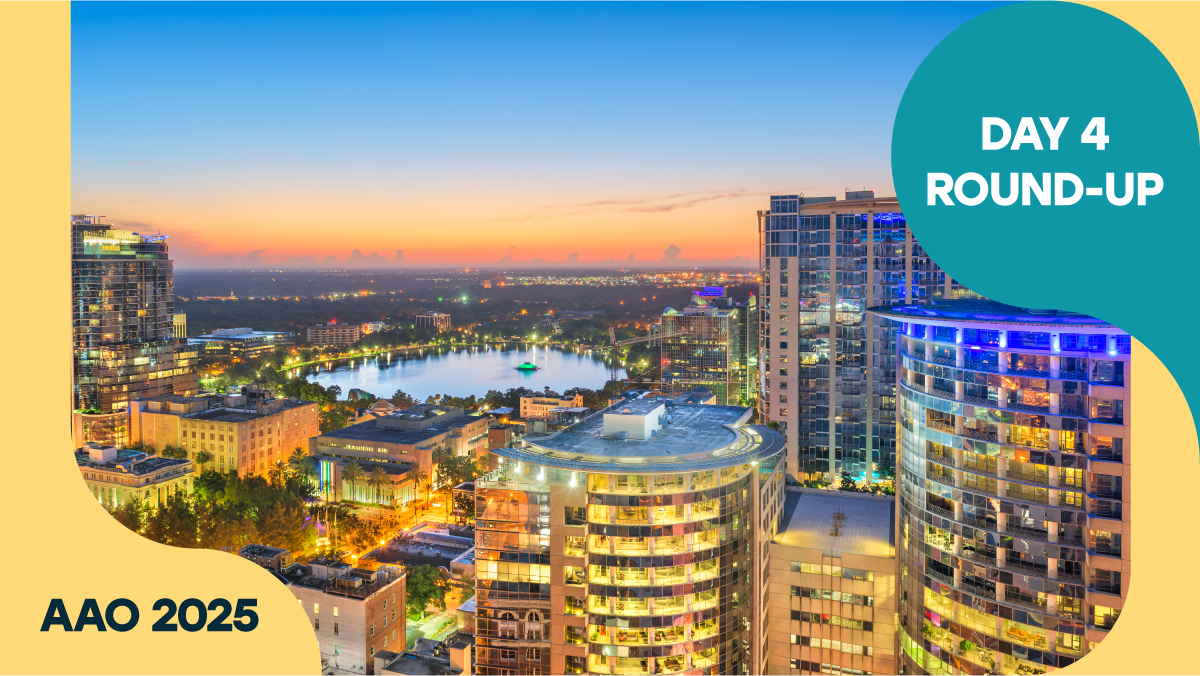We wrap our coverage of America’s ophthalmology Super Bowl with critical safety updates, surgical breakthroughs and an intriguing FDA approval.
The ride is over here at the American Academy of Ophthalmology Annual Meeting 2025 (AAO 2025), but Day 4 is still packed in the ophthalmic thrills.
After an attendee-only evening at the Islands of Adventure theme park, plenty of doctors and industry were still around to attend sessions that were a roller coaster unto themselves.
Our Day 4 coverage spans the spectrum from pharmaceutical vigilance to surgical innovation—and we’re breaking it all down with our final wrap-up from Orlando.
READ MORE: Giddy-up: It’s the Wild West of Vitreoretina
When medications turn on the retina
The first of our two morning symposia put retinal drug toxicity under the microscope, revealing how everything from cancer therapies to party drugs can threaten sight. Dr. Amani Fawzi (United States) delivered a stark warning on hydroxychloroquine, while other presenters broke down the role of OCT for early detection, pentosan polysulfate maculopathy antipsychotics… and cocaine? Learn about common drug toxicities and how to trace their own unique retinal signatures here.
Trauma care gets a tech upgrade
The American Society of Ophthalmic Trauma packed their pearls for solutions to some of the most devastating injuries. Dr. Andrew Lee (USA) opened with a dose of honesty about traumatic optic neuropathy—there’s still no proven treatment—while Dr. Ore-Ofeoluwatomi Adesina (USA) challenged the “race against time” mentality in orbital fracture repair. The session showcased 3D-printed implants, custom iris prosthetics, and minimally invasive approaches to cyclodialysis clefts. Upgrade your trauma game and read now!
READ MORE: Oral Lamivudine Shows Vision Gains in DME Patients in Early Clinical Trial
Pushing the boundaries of vision restoration
Our final scientific session explored therapeutic approaches to vision restoration, featuring cutting-edge work in autologous stem cell therapy for dry AMD, futuristic photovoltaic subretinal implants with massive promise, and Nanoscope Therapeutics’ much-hyped optogenetic therapy for inherited retinal diseases. Nanowire arrays as artificial photoreceptors were also on the menu, so read on to check out our expanding toolkit for a new universe of patients with previously unsolvable visual maladies.
Industry update: Glaukos’ FDA nod for keratoconus therapy
The dawn of Day 4 saw Glaukos announce the FDA approval of Epioxa, the first topical, incision-free corneal cross-linking therapy for keratoconus.
Unlike existing treatments that require removal of the corneal epithelium, Epioxa’s oxygen-enriched formulation eliminates the pain and extended recovery associated with conventional cross-linking procedures. The approval was based on two Phase III trials involving over 400 patients that met primary efficacy endpoints with favorable safety profiles.
READ MORE: Micro-Movements, Mega Impact: The Secret to Boosting Visual Acuity
Glaukos plans commercial availability in Q1 2026, with substantial investments in patient awareness and access programs to address the longstanding underdiagnosis and undertreatment of this progressive corneal disease.
The therapy builds on Glaukos’ first-generation Photrexa system, approved in 2016, but promises streamlined procedures and improved patient comfort. Keratoconus affects patients often under age 30 and, if untreated, can lead to blindness and corneal transplants.
Visit our conference coverage page on PIE and CAKE magazines for more highlights from AAO 2025.
Editor’s Note: The American Academy of Ophthalmology Annual Meeting 2025 (AAO 2025) was held October 17-20, 2025, in Orlando, Florida. Reporting for this story took place during the event. This content is intended exclusively for healthcare professionals. It is not intended for the general public. Products or therapies discussed may not be registered or approved in all jurisdictions, including Singapore.
